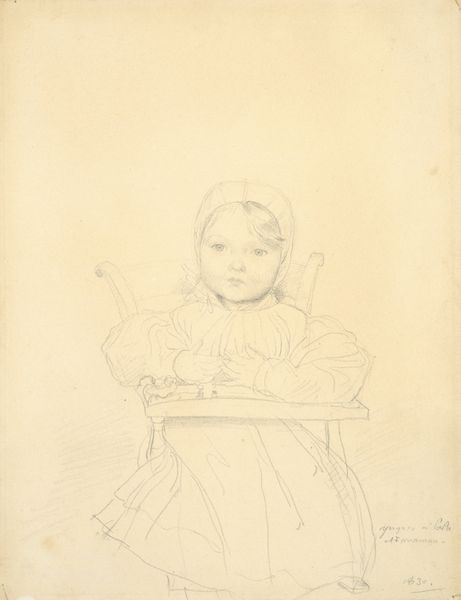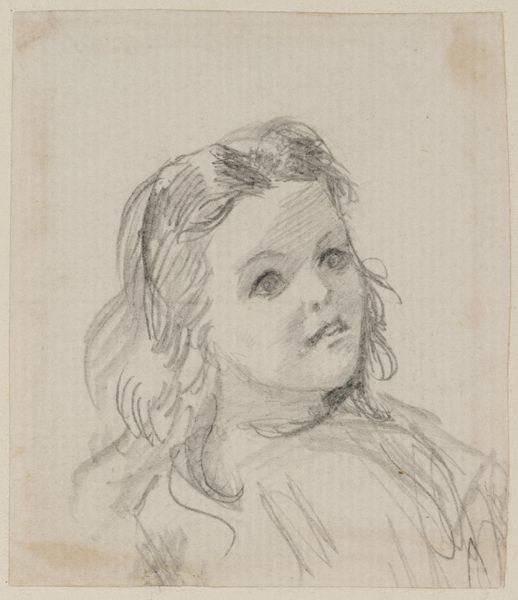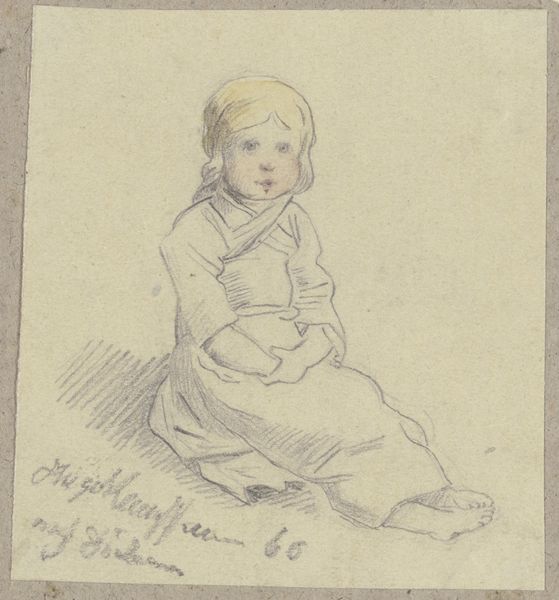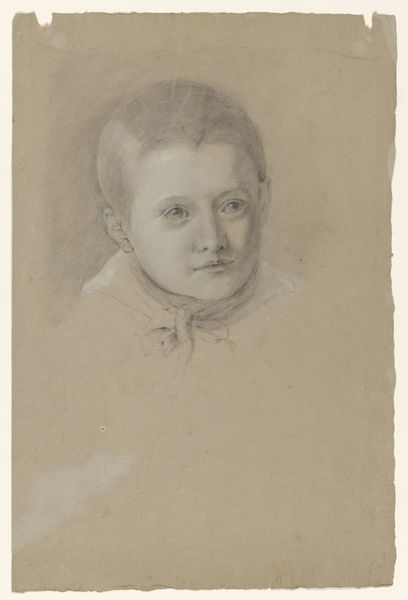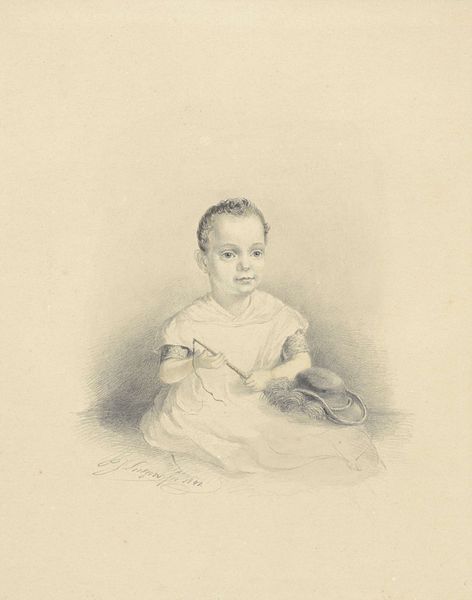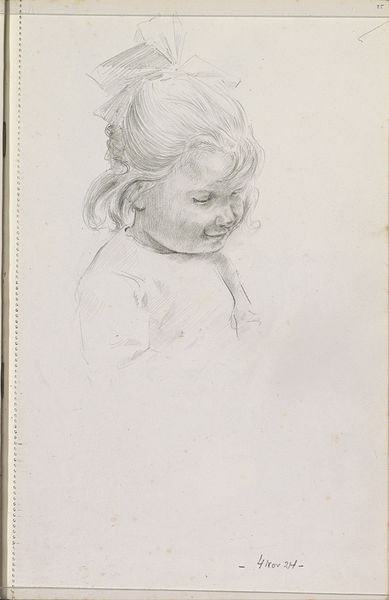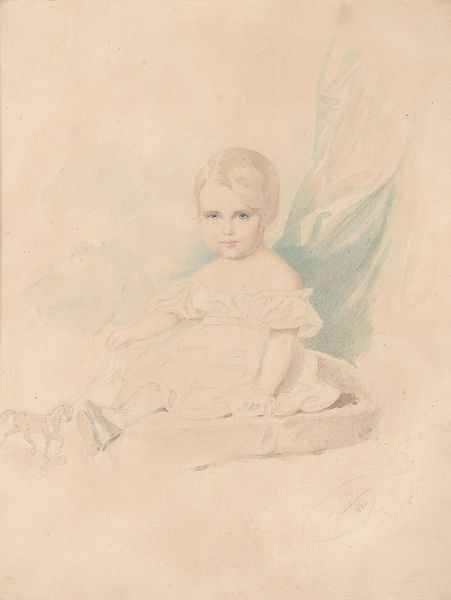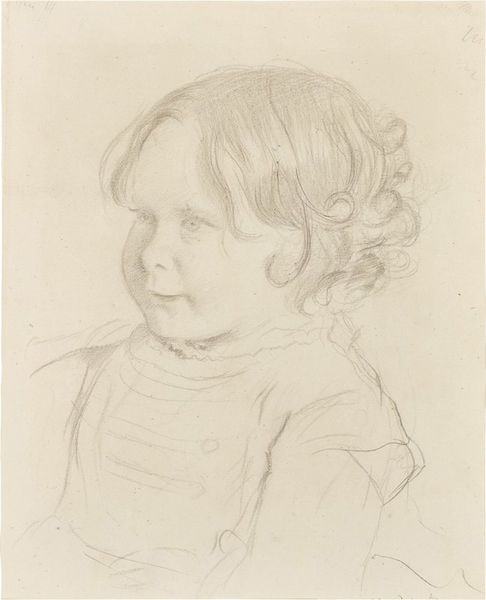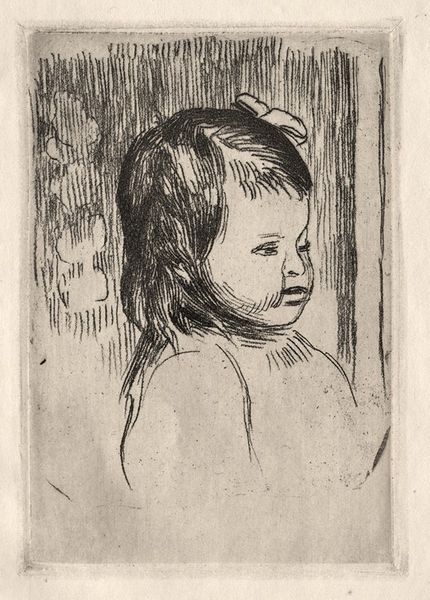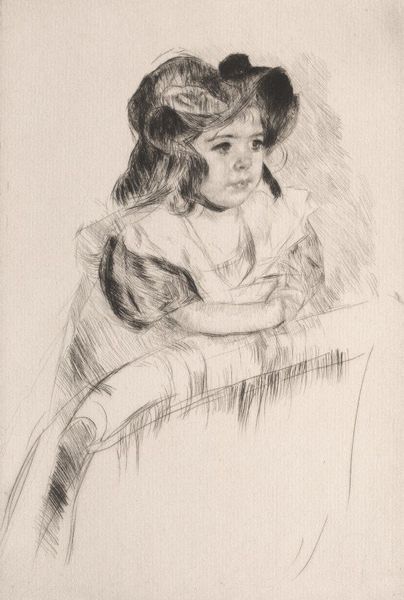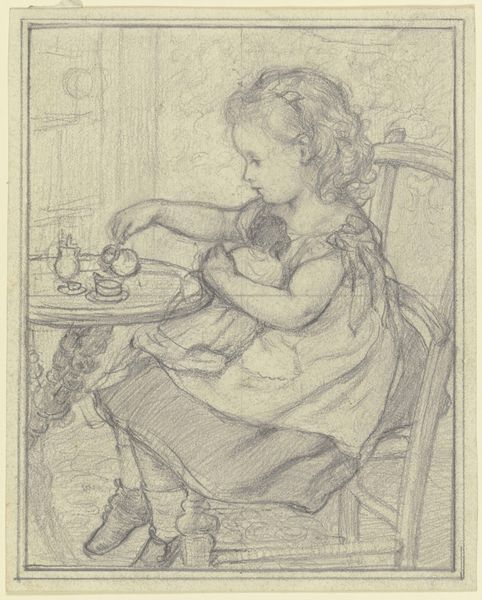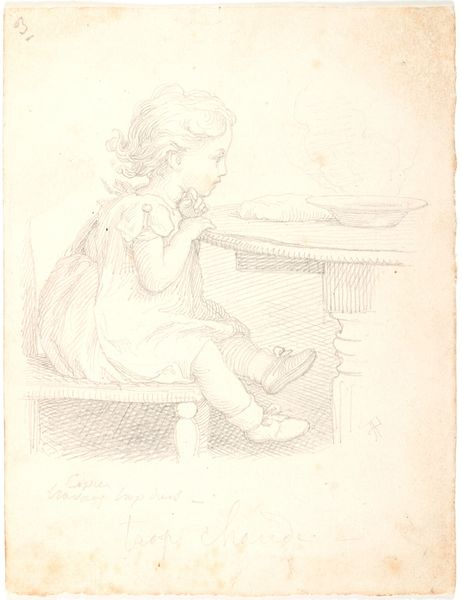
drawing, pencil
#
portrait
#
drawing
#
pencil sketch
#
pencil drawing
#
pencil
#
portrait drawing
#
realism
Copyright: Public Domain: Artvee
Editor: This is Henri Lehmann's "Portrait of a Child," a pencil drawing from around the 19th century. I'm struck by how delicate the lines are, creating such a soft and innocent feeling. What catches your eye in this piece? Curator: The interplay of light and shadow is particularly compelling. Notice how Lehmann uses subtle gradations in tone to define the form of the child's face and clothing. Observe also the strategic use of line weight, varying from the delicate wisps of hair to the slightly heavier lines defining the contours of her hands and dress. These variations imbue the portrait with a dynamic tension. Editor: It’s interesting you focus on the lines, which is true to drawing, but the girl's expression draws me in most. Curator: The expressiveness stems precisely from the artist's control of form. Look at the angles of the mouth and the slight tilt of the head. These are not merely representations but deliberate arrangements that communicate a particular sentiment. Do you see how the arrangement itself generates meaning? Editor: I do. Now that you point it out, even the way the desk is rendered – it’s present, but indistinct – serves to emphasize the figure. Curator: Precisely. Each element, from the subtlest shadow to the most defined line, functions as part of a larger compositional whole, carefully orchestrated to evoke a specific aesthetic response. Editor: I see that now! Thinking about composition and structure really deepens the emotional impact. Thank you! Curator: Indeed. Formal analysis provides a rich framework for understanding how art generates meaning.
Comments
No comments
Be the first to comment and join the conversation on the ultimate creative platform.
